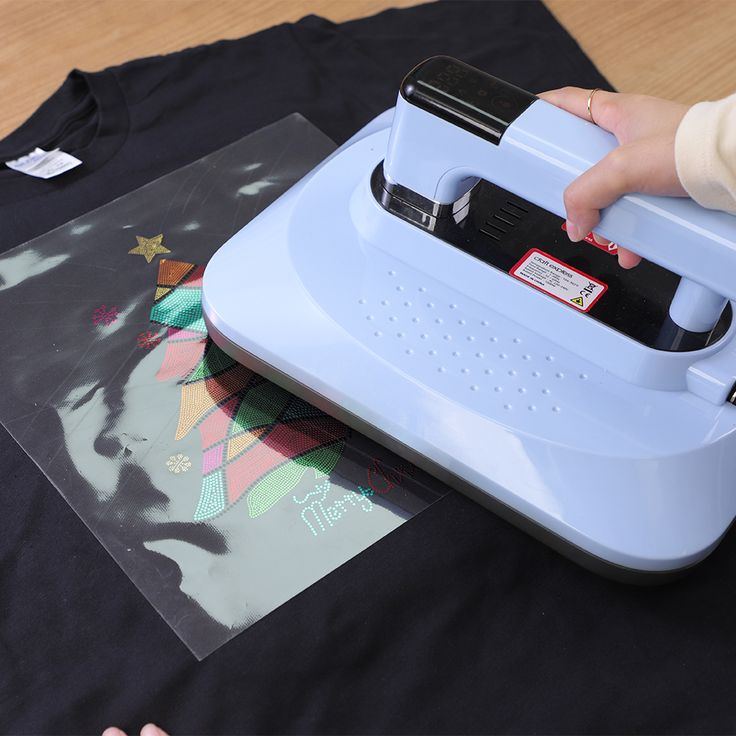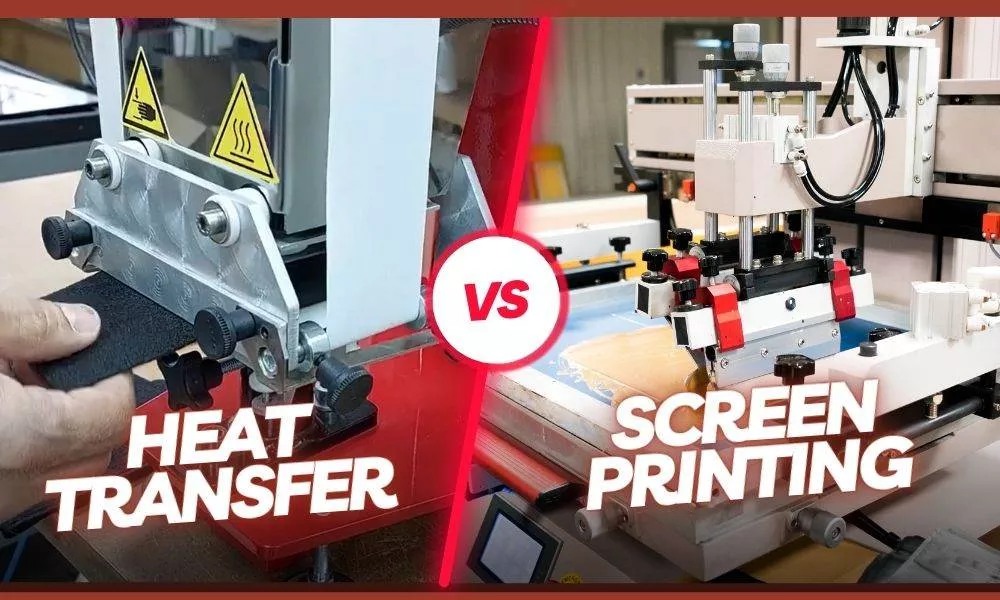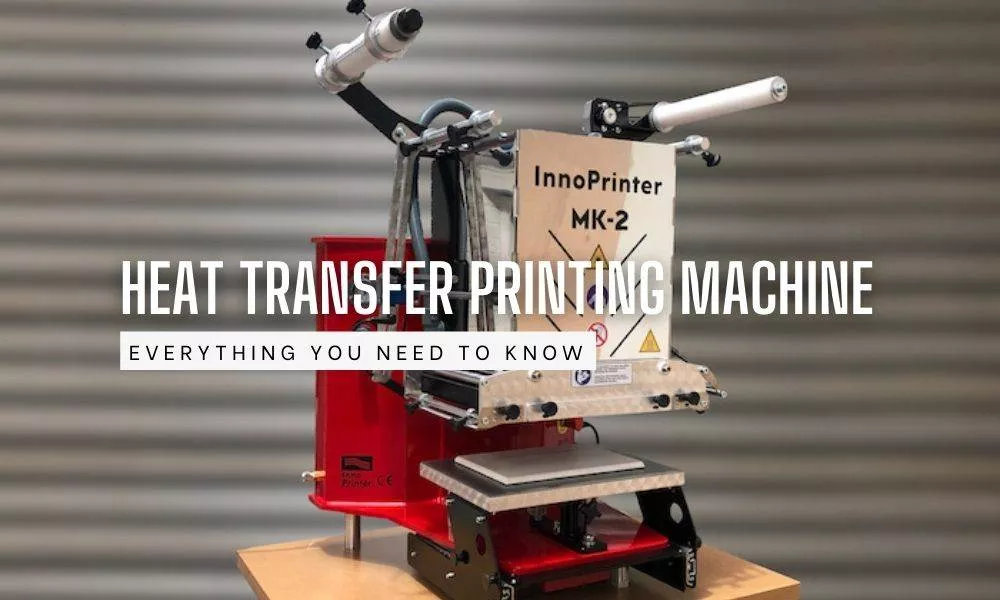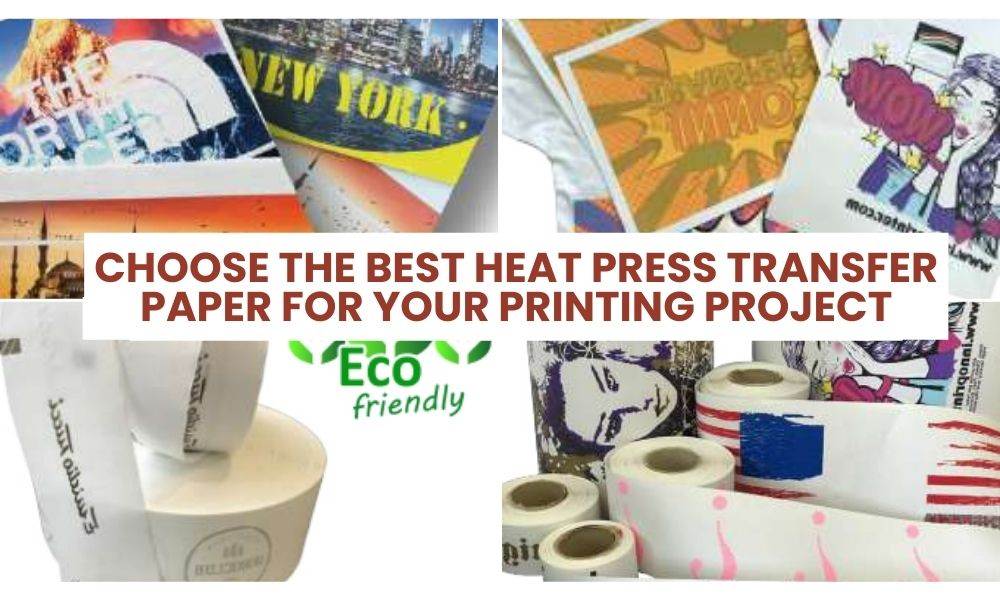Introduction
Are you looking to create your own t-shirt designs rather than purchasing readymade ones from online and offline stores? Then you can attempt heat transfer printing!
The current state of digital printing technology is crowded with numerous approaches. Today’s printing processes may print on paper, metal, plastic, wood, and fabric. Heat transfer printing is a cost-effective and highly satisfying hobby and vocation, but it may be time-consuming. If you’re already convinced, check out our previous articles to learn how to print on heat-transfer vinyl using an inkjet printer and how much heat-transfer paper costs.
This process, also known as thermal printing, uses heat and pressure to transfer sheets. It’s a procedure well-known for its adaptability and customizable designs. While other printing technologies are limited to one or two substrates, thermal printing applies to a wide variety of printable surfaces.
Textile printing is its most popular application. It is also used for signs, decals, home decor, and accessories. Heat transfer printing is a relatively new technology. It is very similar to other printing methods like screen printing and sublimation printing.
What is Heat Transfer Printing?
Heat transfer printing uses heat and pressure to create designs. It entails printing on a transfer film or paper before passing it through a heat press for the final transfer.
Thermal printing is a broad term that refers to any process of transferring designs using high temperatures. Thermal printing refers to any technique that uses transfer films and a heat press.
This includes sublimation, vinyl, DTF, and inkjet/laser heat transfer printing. Individually, these approaches are popular due to their adaptability, high-resolution transfers, and convenience. On the negative, they aren’t the most durable prints.
The Process of Heat Transfer Printing
- Customize the Creation of Design
The first step in the procedure is creating your digital image, just like with any printing method. For further creative freedom, you can use RIP software to construct your image whatever you desire. Illustrator and Canva are among the most widely used graphic design programs. You may create countless images and have more customization when you use these illustrators.
- Producing the necessary design
Transferring your digital design to heat transfer paper is the next step. You can select from a variety of printer types, including DTF, laser, inkjet, and sublimation. All of these methods fall under the category of heat transfer printing.
It’s nevertheless important to keep in mind that some techniques can move straight to heat transfer after printing. However, some still require further processes, such as DTF.
- Heat Application
The use of heat is at the core of all heat transfer printing techniques. Here, your creative concepts are realized and turned into authentic shirt designs.
For this procedure, your printed film must be run through a heat press machine. The ink is melted during this procedure, allowing it to fully bond and transfer to the fabric. Make sure you adhere to each method’s recommended heat and pressure configuration. Every technique uses a different kind of film and ink.
- Reduction and Cooling
Transfer film comes in two varieties: hot peel and cool peel. It must be cooled for a few seconds before peeling when using a cold peel film. On the other hand, you can immediately peel a heated peel sheet after you observe the proper peeling based on the peel type as it ensures durable and damage-free transfer.
Advantages of Heat Transfer Printing
These popular techniques are a result of the significant benefits that heat transfer provides. The following are some benefits of heat transfer printing.
Adaptability
You can transfer your patterns to metal, glass, or ceramics in addition to cloth. Any heat transfer technique can be used for a variety of printing tasks because of the increased availability of canvas. You can deal with the majority of fabric kinds even if you only print on cloth. For instance, DTF allows you to print on mixed, synthetic, or natural textiles.
Because of its adaptability, the method is popular among people who wish to run a printing business that does everything.
Cost-efficiency
Any experienced heat transfer printer will probably tell you that it offers some of the greatest value. In addition to having more readily available and reasonably priced materials and resources, its initial setup alone is less expensive than alternative approaches. Furthermore, it is still cost-effective for small-scale printing and involves fewer stages.
For people who are just beginning their printing firm, heat transfer printing is frequently more popular. It’s also less expensive if you want to print t-shirts for yourself or as a hobby.
Bright Colors and Detailed Patterns
The print quality is another important area where heat transfer printing shines. Even on the most complicated photographs, it yields the finest colors. Consider the quality of a DTF or sublimation print, for instance. Among other techniques, both provide the sharpest results and high-resolution transfers.
User Friendly
The process of heat transfer printing is also simple. For people who wish to get started in the printing industry, it’s a rather simple starting point. It doesn’t require sophisticated tools or equipment, and you can do it with little to no experience. If you have a normal heat press machine, your printer, and consumable materials, it’s fairly feasible to do it at home.
Excellent Quality
The high temperatures and pressures employed in heat transfer machines result in high-quality print designs. As a result, you may print t-shirts with detailed and vibrant designs using this printing technique.
Heat transfer printing’s drawbacks
Heat transfer printing has certain disadvantages even with its indisputable benefits. This is the undesirable aspect.
Durability Issues
One of the main issues with heat transfer prints is their endurance. Even while it creates clear, colorful graphics, the final product is nevertheless susceptible to peeling and splitting. With printed clothing, this is a typical occurrence. Compared to screen printing techniques, the prints deteriorate more quickly. However, by following the right steps and settings, you may still make sure that your prints don’t come off too soon.
Time-consuming
Heat pressing still takes a lot of time, even if heat transfer is a simple process. It takes a long time to run each transfer paper through the heat press machine, particularly when doing so in big quantities. Furthermore, alternative techniques require treating the substrate and the film separately. This slows down the process even further because no stage can be skipped or shortened.
Not Suitable for High-Volume Printing
This technology is not ideal for mass manufacturing due to its time-consuming nature. It necessitates several manual procedures that are just not suitable for printing in huge quantities.
The prints quickly fade
Heat transfer prints are not as long-lasting as sublimation prints. If you use them for a long period, especially after machine washing the fabric a few times, they may fade easily. On the other hand, sublimation prints do not fade as rapidly since they become a part of the cloth.
Comparing Different Printing Techniques
This is a comparison of heat transfer printing with other available printing techniques.
Screen Printing
The efficiency advantage goes to screen printing. Because it can print in big quantities, it can accommodate large runs. Additionally, it creates prints that are more resilient and long-lasting. But there are drawbacks to this approach as well. One is that it is less suitable for custom designs because it requires more setup time to prepare the design. Additionally, intricate or multicolored designs are not appropriate for screen printing.
Printing directly onto clothing (DTG)
DTG printing prints graphics directly into cloth using inkjet technology. This makes it perfect for creating full-color, high-resolution graphics, particularly on cotton textiles. DTG requires specialist equipment that is not affordable for small businesses.
Embroidery
The most resilient designs for t-shirts are unquestionably made by embroidery. Thread, which is frequently utilized for text-based printing and logo creation, is used to stitch the design. It is frequently restricted to printing on pliable materials. Moreover, embroidery has trouble with delicate lines or complex patterns.
Additionally, this approach may be costly and time-consuming.
In conclusion
Using this printing method will be advantageous if your target audience is tiny. However, it would be best to think about other techniques, such as screen printing, to create large quantities of prints. Heat transfer printing has advantages and disadvantages. Whether it’s your best approach will ultimately depend on your printing requirements. If you want sharp and colorful graphics, you should consider investing in this approach. And if you’re searching for a flexible approach, you should never hesitate to select this.
However, thermal printing won’t be a good option if durability is your priority. Additionally, this method is not appropriate for large-scale manufacturing. Therefore, only use this approach if you’re starting a tiny business or printing as a hobby.We have now concluded this short guide. We’ll be back soon with more guides like this one.



